RARE! WWII 1945 Mission #258 Lt. Rix B-29 Navigator XXI Bomber Command SAKAI JAPAN Target Photo Map (No. 90.25 URBAN)
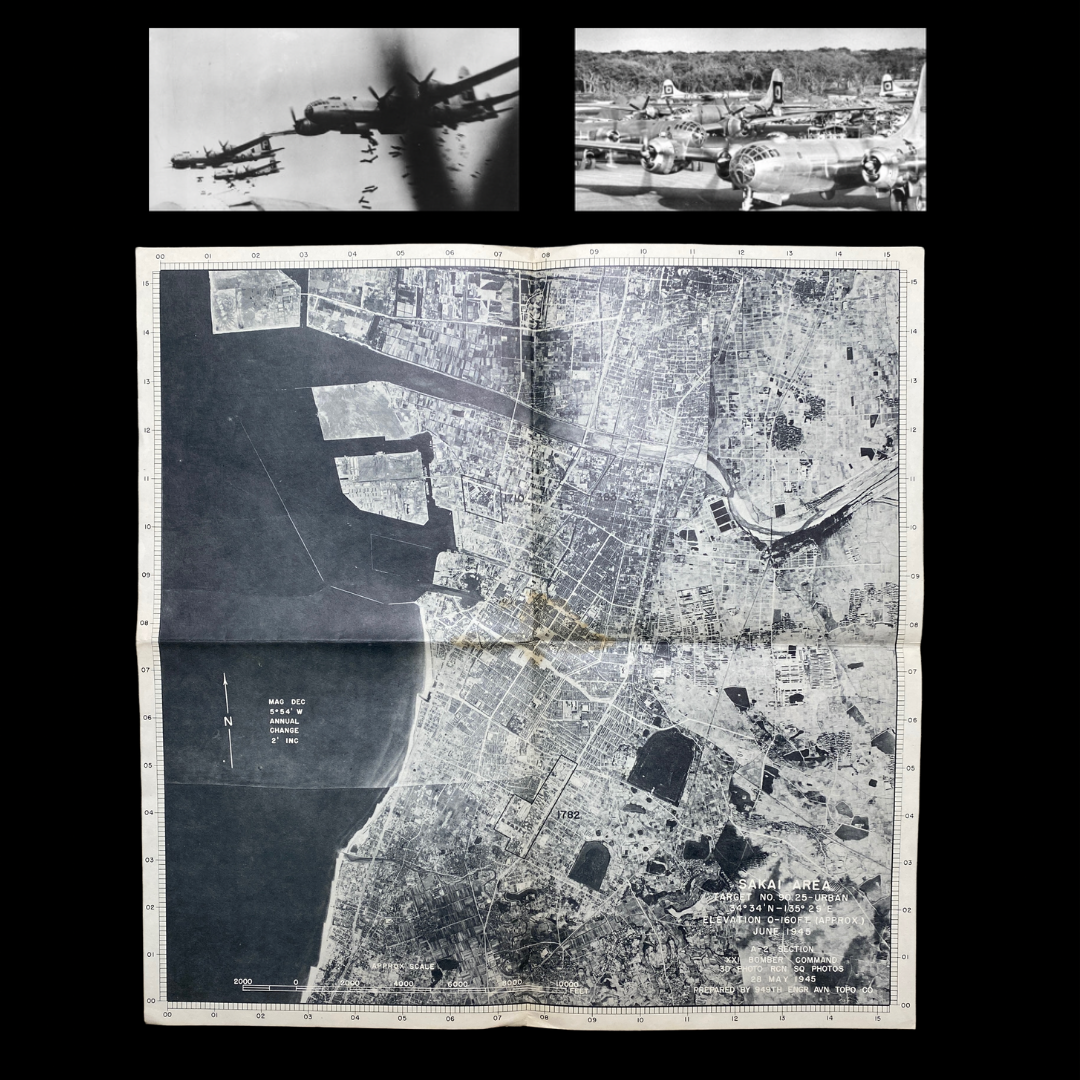

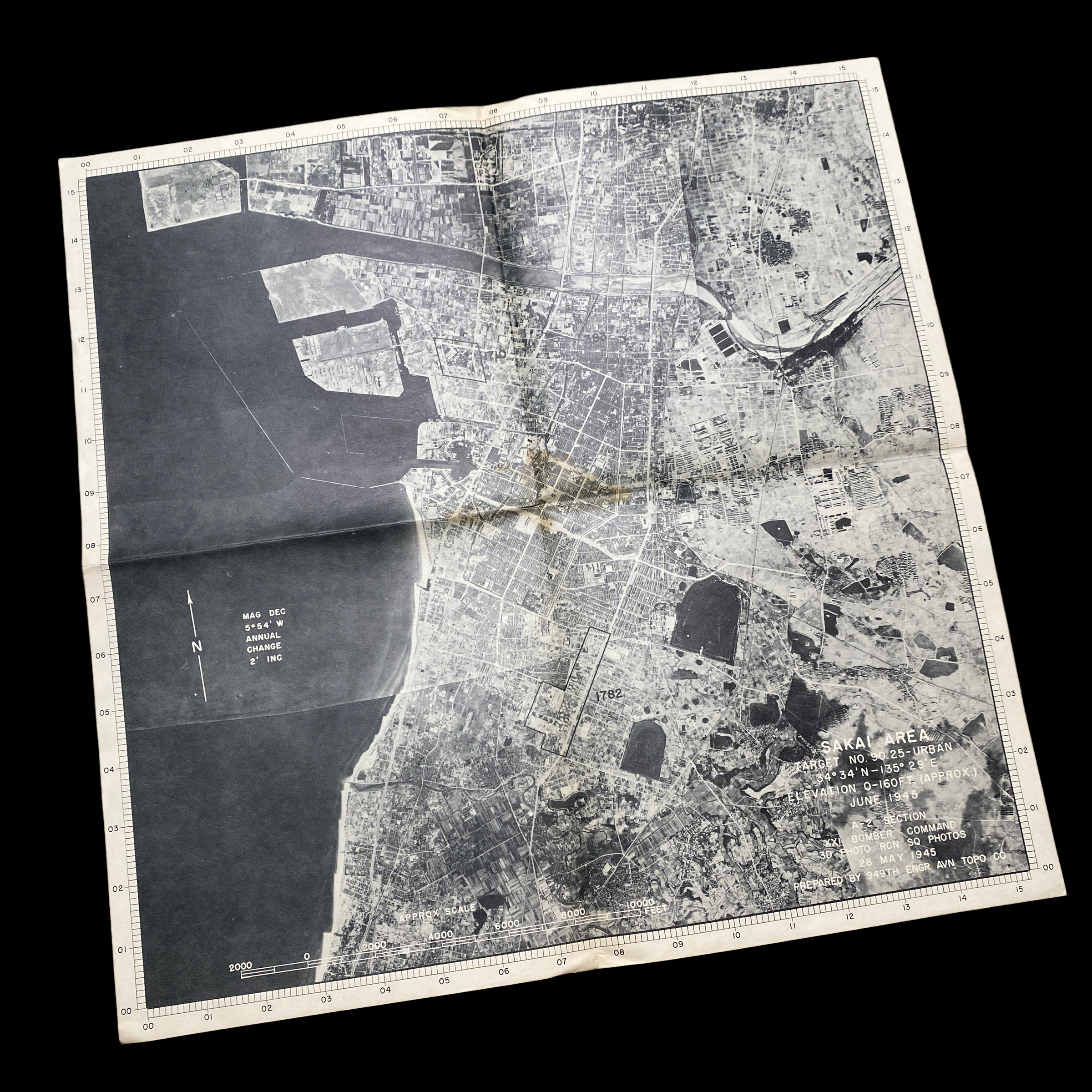






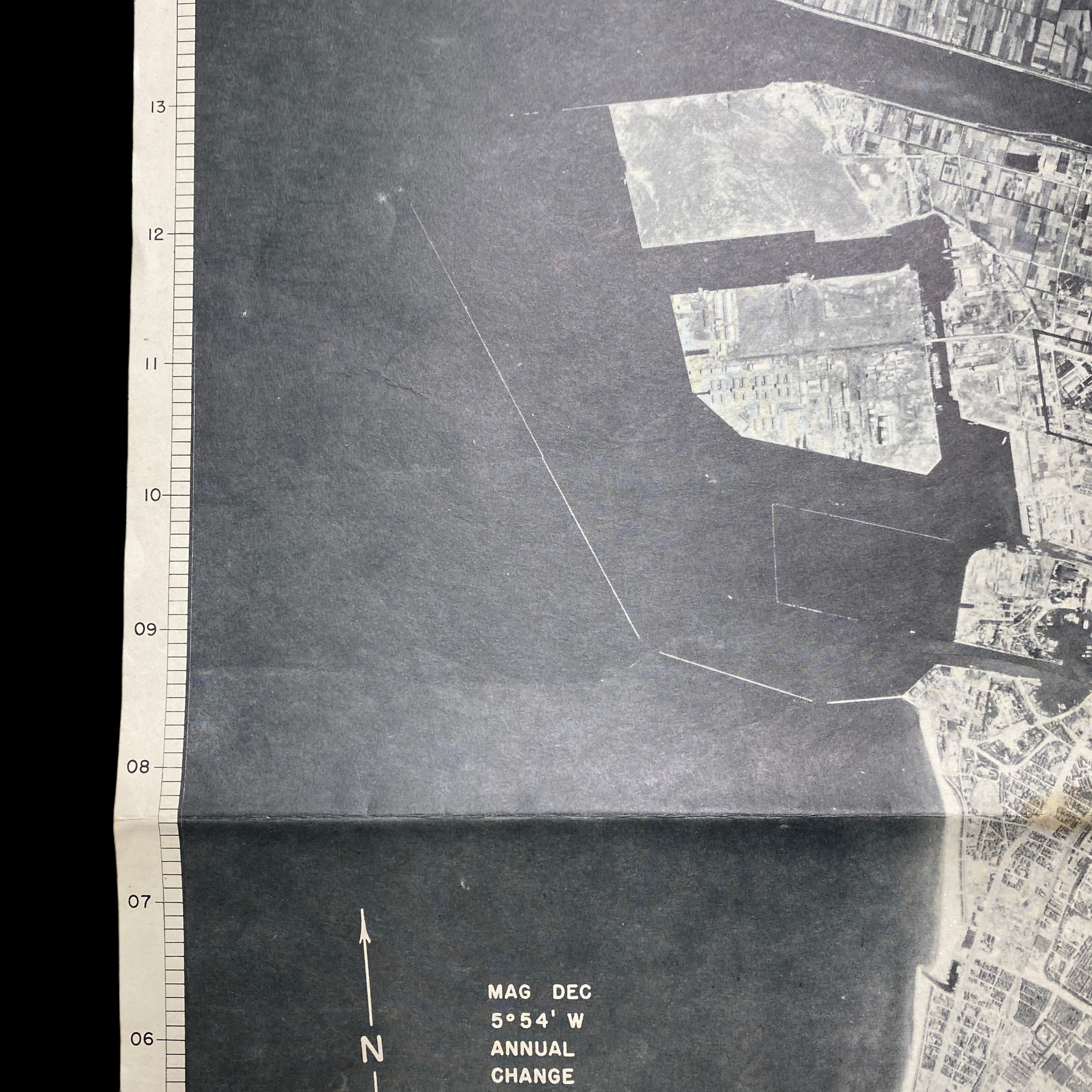

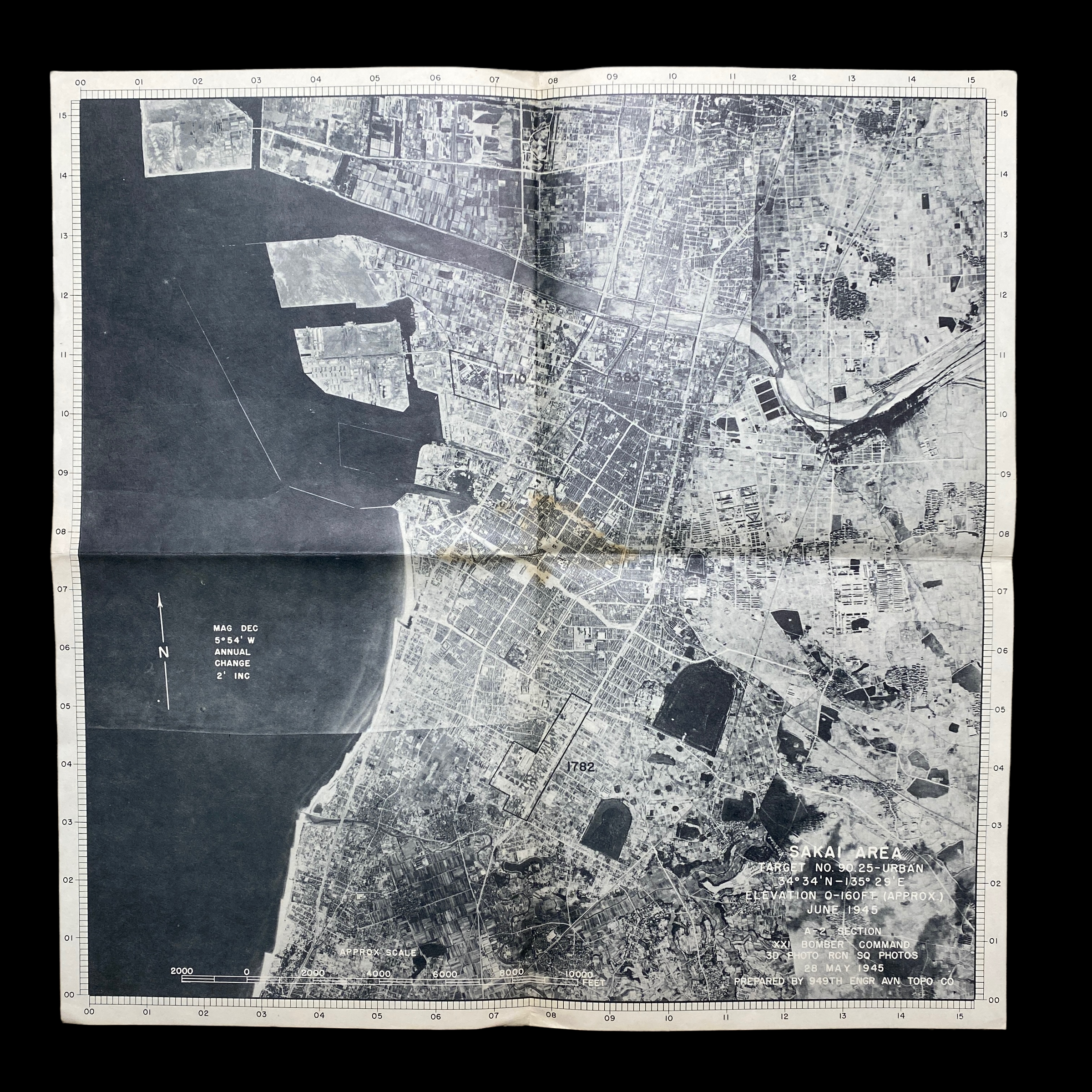

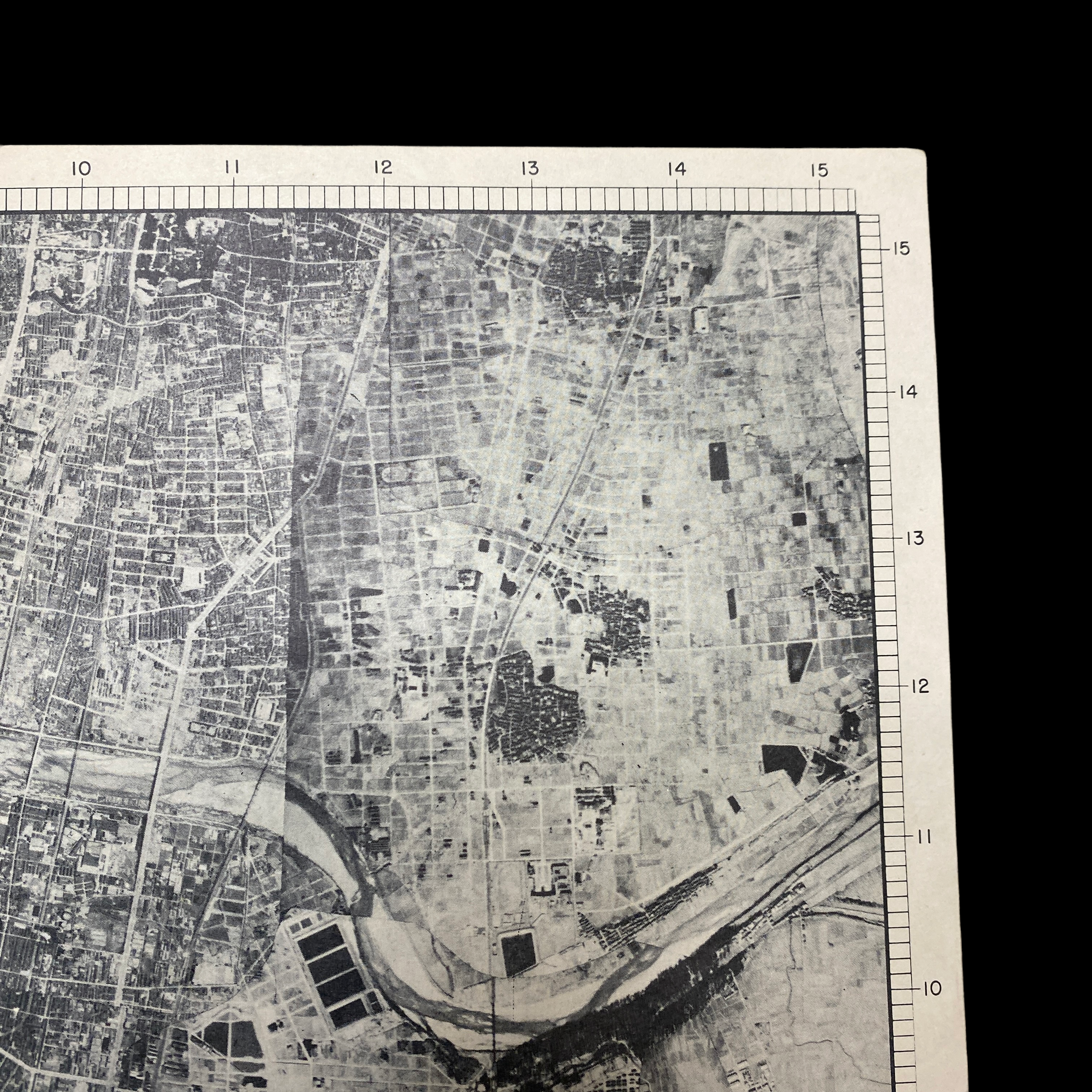
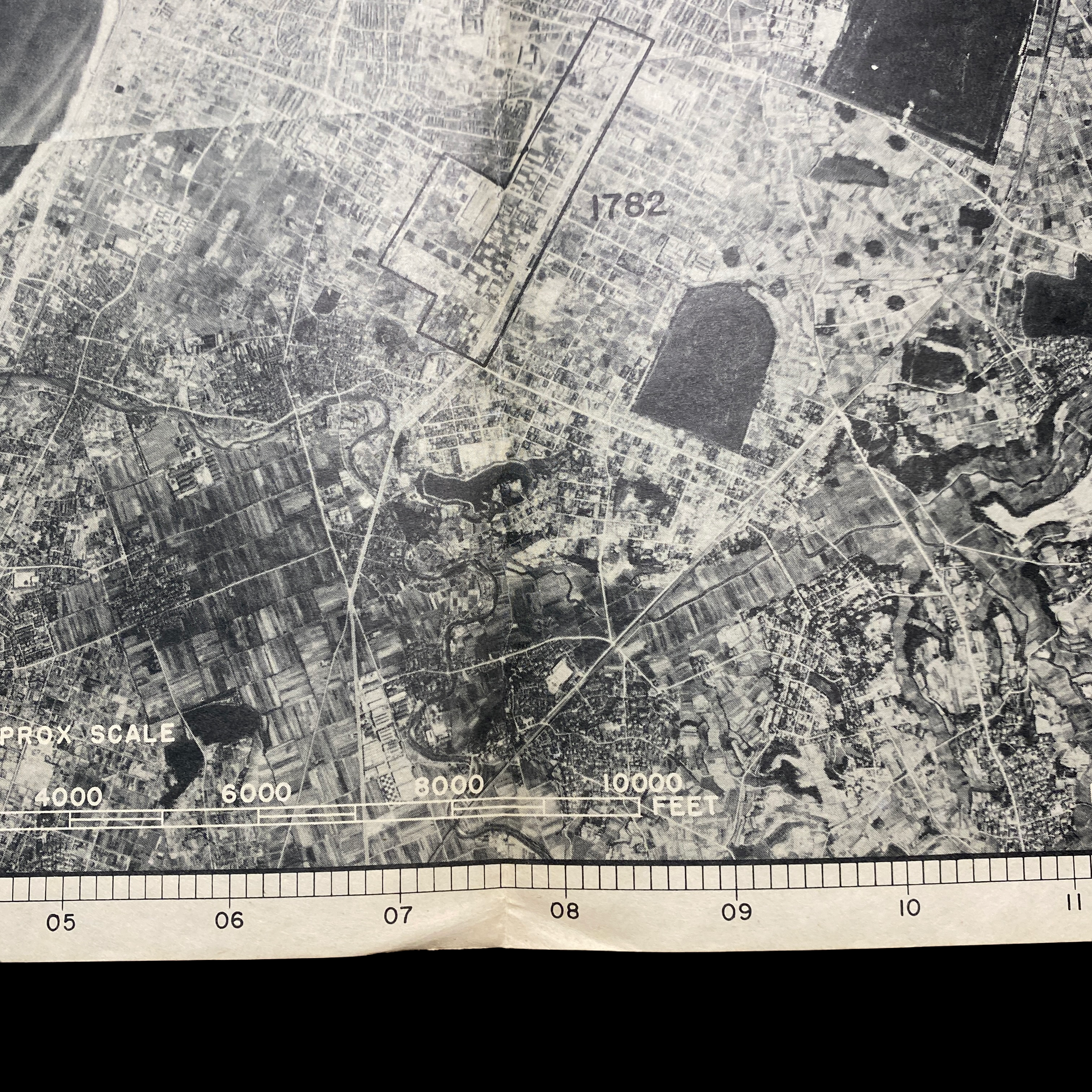
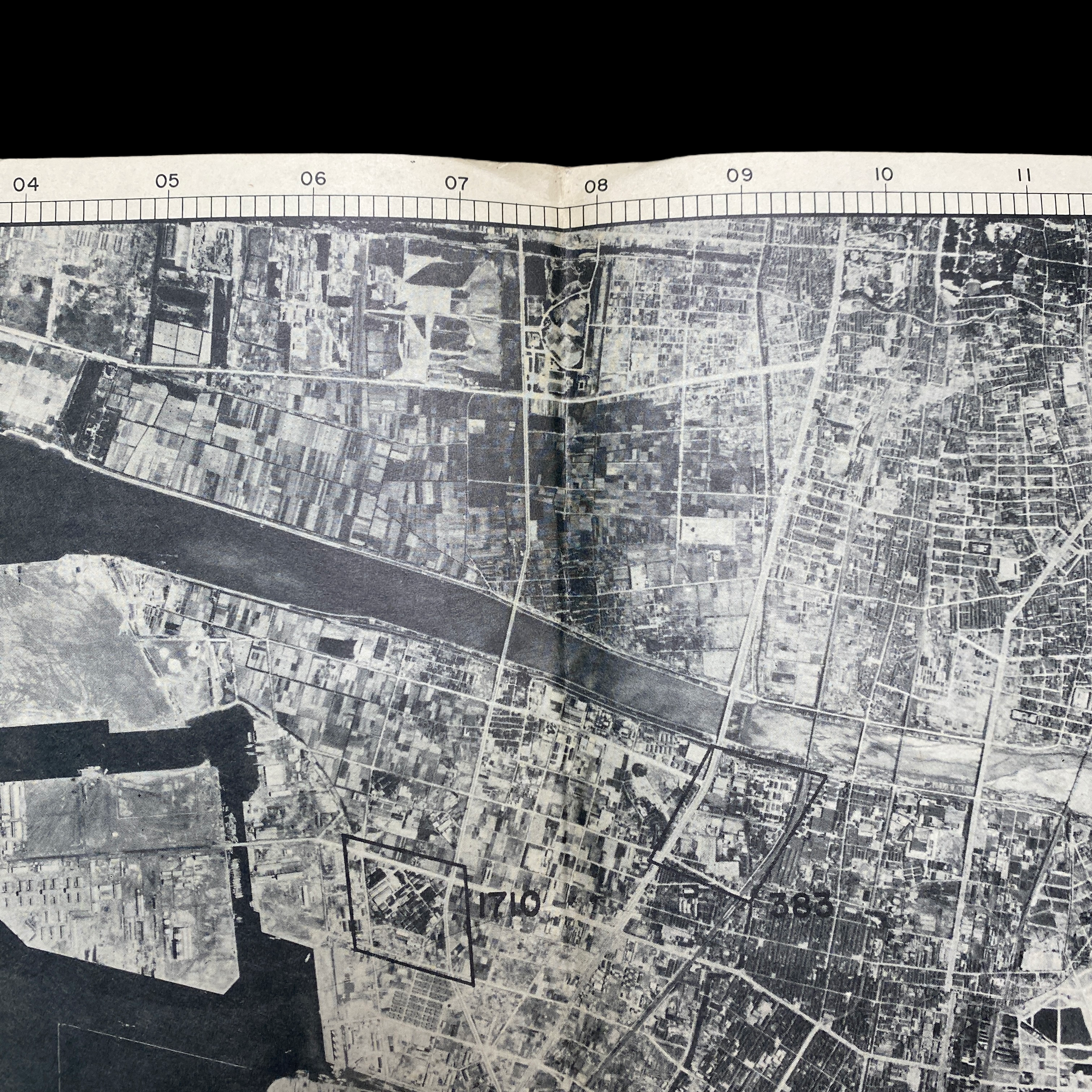

RARE! WWII 1945 Mission #258 Lt. Rix B-29 Navigator XXI Bomber Command SAKAI JAPAN Target Photo Map (No. 90.25 URBAN)
Comes with hand-signed C.O.A.
These XXI Bomber Command target photo maps rarely come up for sale in the public sector. This is a once in a timeline chance to own a piece of B-29 WWII history.
This incredibly scare and museum-grade ‘RESTRICTED’ WWII XXI Bomber Command (20th Air Force) TARGET AERIAL PHOTO MAP CHART was used during the USAAF long-range bombardment operations, against Japan until mid-July 1945. The XXI Bomber Command was headquartered at Harmon Field, Guam, in the Mariana Islands.
Dated June 1945 and titled “SAKAI AREA - TARGET NO. 90.25 URBAN”, this A-2 SECTION were produced in limited quantities with previous aerial reconnaissance mission photos by the 30th Photo Reconnaissance Squadron taken on May 28th, 1945
This navigators and bombardier aerial photo chart map was specifically creating using the most updated military intelligence in order to give B-29 Superfortress aircraft the most accurate target information. This was done for fast and effective target identification as well as accurate navigation and bomb/incendiary accuracy. These target photo charts were handed to B-29 crews during the target mission briefing and were then carried on the B-29 aircraft to used during the raid itself.
These aerial photo charts were referenced during pre-mission briefings as well as when the bombardier was approaching the target. This was meant to provide the B-29 bombardier with the most real view of his target for the best target identification. The most important primary target buildings were always outlined and marked with a number to be referenced on the target key.
This SAKAI, Japan target chart was used by WWII 1st Lieutenant Cecil Rix who served as a B-29 Bombardier Navigator in the Pacific Theater as well as a Radar Observer on Saipan and Guam during the later part of WWII.
XXI Bomber Command B-29 Air Raid on SAKAI:
LeMay's original plan had been indefinite in respect to mining operations after 1 June; there had been some hope in his headquarters that large-scale mining might taper off into a policing job, but in the face of the evident success of the campaign, he was bound to continue it. Actually, in spite of a full docket of bombing, LeMay stepped up the pace of the mining program. He gave first priority to Empire strikes, even for the 313th Wing, but ordered Davies to use I group, when not otherwise employed, to sow 4,050 mines in small increments.124Davies assigned the task to Lt. Col. Charles M. Eisenhart's 505th Bombardment Group (VH),which flew fourteen missions between 7 June and 3 July. In 40 4B-29 sorties the group planted 3,542 effective mines in 10 areas in the Inland Sea and Sea of Japan: the two Shimonoseki fields, Kobe-Osaka, Fukuoka-Karatsu, Fushiki-Nanao, Niigata-Sakata, Funakawa, Nagi-Senzaki-Yuya-wan, Sakai, and Maizuru-Miyazu-Obama-Tsuruga. Mines were adjusted to sink ships of various sizes, and the proportion set for smaller ships (55 per cent for vessels of 2,000 tons or less), like the unimportance of many of the targets in normal times, was an index of the desperate condition of Japanese shipping.